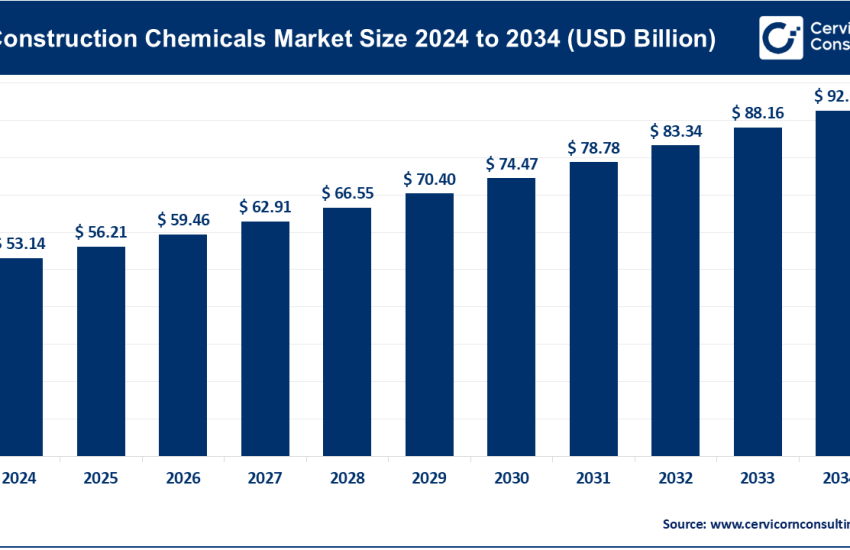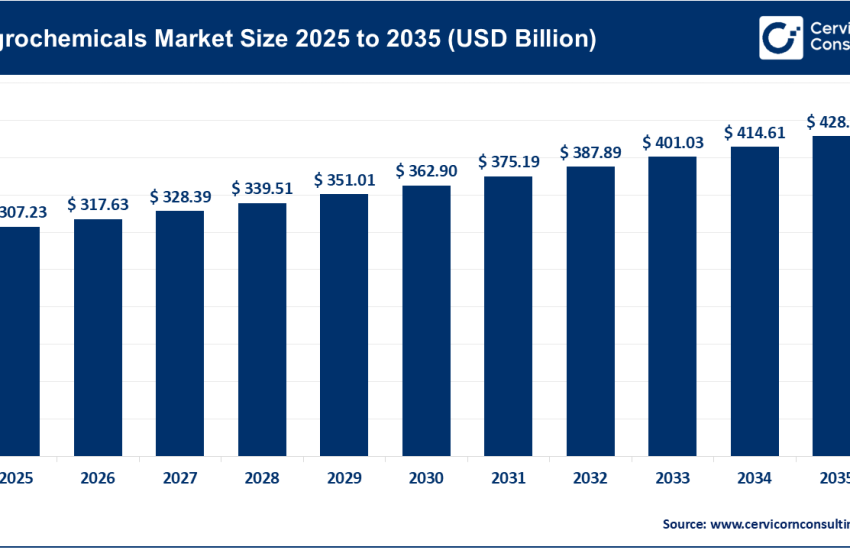Carbon Steel Market Revenue, Global Presence, and Strategic Insights by 2034
Carbon Steel Market Size
The global carbon steel market size was worth USD 1.01 trillion in 2024 and is anticipated to expand to around USD 1.54 trillion by 2034, registering a compound annual growth rate (CAGR) of 4.31% from 2025 to 2034.
What is the Carbon Steel Market?
The carbon steel market refers to the global production, processing, distribution, and sale of steels in which carbon is the principal alloying element. Unlike stainless or alloy steels, which rely on other elements such as chromium, nickel, or molybdenum, carbon steels derive their key properties from the proportion of carbon mixed with iron. The market encompasses low-carbon steels used for structural and sheet products, medium-carbon steels for higher strength applications, and high-carbon steels for wear-resistant and spring-grade uses.
This ecosystem spans upstream raw materials (iron ore, coking coal), primary steelmaking (blast furnace/basic oxygen furnace and electric arc furnace routes), downstream processing (hot/cold rolling, coating, heat treatment), and end-use sectors like construction, automotive, heavy machinery, energy, and infrastructure. Market dynamics are influenced by commodity cycles, trade flows, energy costs, environmental policies, and technological shifts toward decarbonization.
Why Is the Carbon Steel Market Important?
Carbon steel forms the backbone of industrial and economic development. It is integral to the construction of buildings, bridges, railways, vehicles, pipelines, machinery, and countless everyday items. Its combination of strength, ductility, cost-effectiveness, and availability makes it indispensable across industries. The sector also accounts for a large share of global industrial energy use and CO₂ emissions, making it central to global climate and sustainability strategies. In short, carbon steel is a material of strategic importance—driving GDP-linked growth and shaping the world’s transition toward low-carbon manufacturing.
Get a Free Sample: https://www.cervicornconsulting.com/sample/2775
Carbon Steel Market — Growth Factors
The carbon steel market’s growth is propelled by rapid urbanization, rising construction activity in emerging economies, expansion in automotive and heavy machinery production, and continuous infrastructure investments worldwide. Demand is also supported by large-scale energy and industrial projects, including pipelines, renewable infrastructure, and transmission networks.
On the supply side, manufacturers are investing in process modernization, capacity optimization, and new low-carbon production routes such as hydrogen-based direct reduced iron (DRI) and electric arc furnaces (EAFs). Governments are encouraging green steel initiatives, while trade policies and tariffs protect domestic industries. Additionally, volatility in raw material prices—especially iron ore and coking coal—has led companies to seek operational efficiency and vertical integration. Collectively, these drivers are shaping a new, more sustainable growth phase for the carbon steel industry.
Carbon Steel Market — Top Companies
1. JFE Steel Corporation
Specialization: Flat and long carbon steels for automotive, construction, shipbuilding, and energy applications.
Key Focus Areas: High-strength automotive steels, coated sheets, heavy plates, and environmentally efficient production technologies.
Notable Features: JFE Steel is one of Japan’s largest integrated steel producers, known for its innovation in high-grade steels and advanced manufacturing processes. The company also emphasizes R&D in low-carbon production and recycling.
2024 Revenue: Approximately ¥3,365 billion.
Market Share: Around 1.2% of global crude steel output (23–24 million tonnes).
Global Presence: Headquarters in Japan, with subsidiaries and service centers across Asia, North America, and Europe.
2. HBIS Group
Specialization: Large-scale integrated carbon steel production including plates, rails, wire rods, and structural steels.
Key Focus Areas: Industrial diversification, high-strength construction steels, overseas expansion, and digitalized manufacturing.
Notable Features: HBIS Group ranks among China’s top steel producers and continues to expand globally through acquisitions and joint ventures. It has been investing in clean and efficient production lines and downstream value-added processing.
2024 Revenue: Approximately CNY 402 billion.
Market Share: About 2.2–2.4% of global production (41–42 million tonnes).
Global Presence: Strong presence in China, with operations and partnerships across Southeast Asia, Africa, and Europe.
3. AK Steel Corporation (Cleveland-Cliffs Inc.)
Specialization: Flat-rolled carbon steels primarily for the automotive, appliance, and construction sectors.
Key Focus Areas: Automotive-grade steels, galvanized and coated sheet, integration with iron ore and pellet operations.
Notable Features: AK Steel, now part of Cleveland-Cliffs, is integrated into a fully domestic U.S. supply chain. The company benefits from vertical integration that includes mining, pelletizing, and steelmaking operations.
2024 Revenue: Cleveland-Cliffs reported total 2024 revenues of approximately USD 19.2 billion (consolidated, including AK Steel).
Market Share: Around 0.8–0.9% of global output.
Global Presence: Primarily based in the United States with facilities across the Midwest and partnerships in the automotive sector.
4. Evraz PLC
Specialization: Long products, rails, plates, and tubular products for construction, mining, and energy industries.
Key Focus Areas: Rail steel, heavy sections, and structural products; formerly operated large-scale integrated steelmaking facilities in Russia, the UK, and North America.
Notable Features: Historically a major international player, Evraz has faced operational and reporting constraints due to geopolitical and sanction-related challenges.
2024 Revenue: Not publicly disclosed due to suspension of reporting.
Market Share: Estimated under 1% of global output.
Global Presence: Historically active across Russia, North America, and Europe; current footprint limited due to sanctions and restructuring.
5. Baosteel Group (Baoshan Iron & Steel / China Baowu)
Specialization: Flat steel, automotive sheet, heavy plates, and pipeline steel.
Key Focus Areas: Advanced automotive and electrical steels, process automation, green hydrogen-based production, and overseas expansion.
Notable Features: Baosteel operates as the flagship listed arm of China Baowu Group, the world’s largest steel producer. The company has a strong focus on sustainable manufacturing and new-energy materials.
2024 Revenue: Approximately CNY 322 billion.
Market Share: Roughly 6–7% of global output as part of China Baowu Group (over 130 million tonnes combined).
Global Presence: Predominantly China-based, with growing overseas ventures in Southeast Asia, the Middle East, and Africa, including a USD 1 billion joint venture in Saudi Arabia.
Leading Trends and Their Impact
1. Decarbonization and Green Steel Investment
A defining trend is the global shift toward low-carbon steelmaking. Producers are investing heavily in technologies like hydrogen-based DRI, EAFs powered by renewable energy, and carbon capture, utilization, and storage (CCUS). These projects are supported by government incentives, grants, and climate finance mechanisms. The transition not only reduces emissions but also reshapes competitive dynamics, as companies capable of producing certified green steel can command premium pricing and secure long-term contracts with sustainability-conscious customers.
2. Product Diversification and Value-Added Steel
Facing tighter margins in commodity-grade products, steelmakers are focusing on high-strength, corrosion-resistant, and coated steels for automotive, renewable energy, and infrastructure sectors. Advanced high-strength steels (AHSS) for lightweight vehicles and pre-fabricated structural steels for smart cities represent high-growth niches.
3. Trade Policies and Market Protection
Tariffs, import quotas, and anti-dumping duties continue to influence market flows. Countries such as India, the United States, and members of the European Union have implemented protective measures to safeguard domestic industries. These policies alter supply chains, leading to regional consolidation and localized production.
4. Raw Material Volatility
Price fluctuations in iron ore and metallurgical coal significantly impact steelmaking costs. Many producers are pursuing upstream integration or long-term supply agreements to mitigate risks. Supply disruptions can quickly affect profit margins, particularly in emerging markets reliant on imports.
5. Consolidation and Integration
Mergers and acquisitions are reshaping the industry. Larger conglomerates with vertical integration—covering mining, steelmaking, and distribution—are gaining resilience against cyclical downturns. The integration of AK Steel into Cleveland-Cliffs is a prime example of this structural shift.
6. Digital Transformation
Smart manufacturing, automation, predictive maintenance, and data-driven process optimization are improving efficiency and reducing energy use. Digitalization enhances product quality and traceability—critical in automotive and energy applications where material performance is closely monitored.
Impact Summary:
These trends collectively shift the market toward efficiency, sustainability, and higher-value production. Companies that adapt quickly to decarbonization and technology adoption are expected to maintain a competitive advantage, while those lagging behind face regulatory and market risks.
Successful Examples of the Carbon Steel Market Worldwide
Baosteel Group (China)
Baosteel has expanded its global reach by forming joint ventures in regions like the Middle East. Its billion-dollar partnership in Saudi Arabia for hydrogen-based DRI production showcases how leading producers are aligning with national energy diversification and sustainability agendas. This approach strengthens supply security while advancing decarbonization goals.
Cleveland-Cliffs (United States)
Cleveland-Cliffs exemplifies strategic vertical integration by combining mining, pelletizing, and steelmaking within one organization. This model enhances supply security and cost control. The company has also leveraged federal incentives to develop low-carbon steel technologies, ensuring long-term competitiveness in the U.S. market.
JFE Steel (Japan)
JFE Steel has maintained its global reputation by producing ultra-high-strength automotive steels and leveraging advanced manufacturing processes. Its focus on quality, efficiency, and innovation allows it to serve premium markets while reducing energy consumption. Japan’s technological approach serves as a global benchmark for sustainable steelmaking.
Green Steel Hubs (India and EU)
India and the European Union have launched “green steel” initiatives, encouraging producers to adopt low-carbon technologies through subsidies, carbon credits, and public-private partnerships. These programs demonstrate how policy and industry collaboration can accelerate environmental and economic transformation in heavy industries.
Global Regional Analysis and Government Initiatives
Asia-Pacific (China, India, Japan, South Korea)
Asia dominates global carbon steel production, accounting for nearly 70% of total output.
- China: Continues to lead in volume, though government policies now emphasize quality over quantity. Environmental regulations and emission targets are prompting capacity rationalization and technology upgrades. The state supports leading producers like HBIS and Baowu in expanding globally through partnerships and acquisitions.
- India: Pursuing aggressive expansion with targets to achieve 300 million tonnes of capacity by 2030. Government-backed initiatives such as the “National Green Steel Policy” and incentives for hydrogen-based DRI are fostering sustainable growth. Protective tariffs help local players compete against cheap imports.
- Japan and South Korea: Focus on premium automotive steels and technological innovation. Both countries are leaders in process automation, efficiency, and R&D, making them exporters of high-value products rather than raw commodity steel.
North America (United States, Canada, Mexico)
The U.S. steel market is characterized by consolidation and protectionism. Domestic producers benefit from trade tariffs and government funding for decarbonization. Cleveland-Cliffs, Nucor, and U.S. Steel are leading efforts to develop low-carbon production routes, including hydrogen-ready DRI and EAF expansions. These projects align with federal goals to reduce industrial emissions. Canada and Mexico, integrated through the USMCA agreement, contribute to a regional value chain emphasizing supply security and low-carbon trade.
Europe
European steelmakers are under pressure from stringent emissions targets under the EU Green Deal. The introduction of the Carbon Border Adjustment Mechanism (CBAM) will tax imports from higher-emission producers, incentivizing green production both within and outside the EU. European producers are investing heavily in hydrogen-based steelmaking and CCUS, though energy costs and regulatory complexity remain challenges. Countries like Germany and Sweden are front-runners, hosting pioneering “green steel” projects supported by public funding.
Middle East and Africa
The Middle East, especially Saudi Arabia and the UAE, is emerging as a hub for low-carbon steel due to abundant natural gas and renewable resources. Joint ventures with Asian and European producers are building new DRI plants and integrated facilities designed for hydrogen use. Africa, meanwhile, is developing regional capacity to reduce import dependence. Countries like Egypt and South Africa are modernizing their steel industries with state-backed infrastructure investments.
Latin America
Latin America’s steel market, led by Brazil and Mexico, benefits from rich iron ore reserves and access to renewable energy for EAF operations. Brazil is actively positioning itself as a green steel exporter by leveraging biochar and hydrogen technologies. Government initiatives in infrastructure and manufacturing are supporting steady demand growth across the region.
Policy and Regulation Drivers
- Trade Protection Measures: Import tariffs and anti-dumping actions stabilize domestic markets and prevent price collapses, particularly in developing economies.
- Environmental Regulations: Carbon pricing and emission limits are compelling producers to adopt cleaner technologies.
- Industrial Incentives: Government funding for modernization, automation, and low-carbon steel projects is becoming more common, particularly in the U.S., EU, and India.
- Infrastructure Investments: National infrastructure missions in India, the U.S., and Southeast Asia are generating sustained demand for carbon steel in construction and transport sectors.
- Public–Private Partnerships: Collaborative projects between governments and major steelmakers are accelerating the adoption of green technologies and ensuring long-term supply stability.
Summary of Global Market Dynamics
The global carbon steel market in 2024 is at a transformative crossroads. Demand remains strong, underpinned by infrastructure and industrial development. However, the transition toward sustainability, energy efficiency, and digitalization is reshaping traditional business models. While Asia continues to dominate production, North America and Europe are focusing on technological innovation and emission reduction. The Middle East and Latin America are rising as emerging investment destinations. Across all regions, the convergence of industrial policy, green investment, and trade protectionism is setting the tone for the future of the carbon steel industry.
To Get Detailed Overview, Contact Us: https://www.cervicornconsulting.com/contact-us
Read Report: Data Center Lithium-ion Battery Market Revenue, Global Presence, and Strategic Insights by 2034



